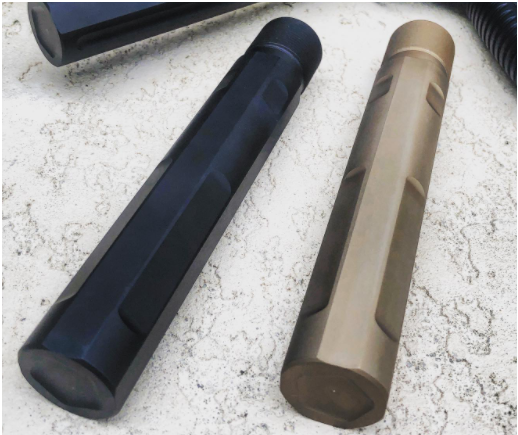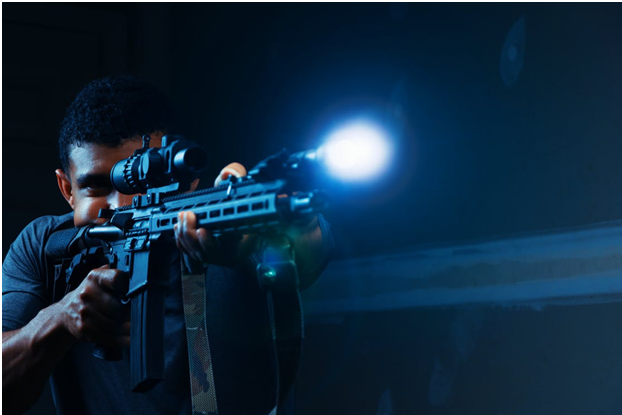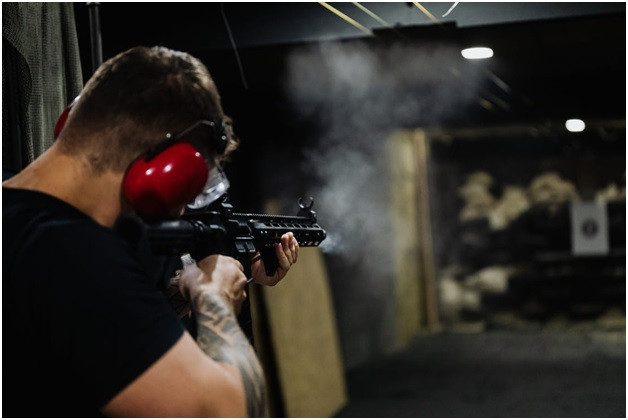Bolt carrier groups and optics get a lot of air time. Everyone knows you can improve cycling time and close your groups by installing a BCG with better permanent dry lubricity or shooting over a reflex sight that lets you keep the sight picture clear.
But what about the less known mechanics of the sporting rifle? Each and every part plays a role, down to the lowliest roll pin. Without the least of them, the rifle would not function.
Case in point: your rifle’s buffer tube and the components it contains. Without them, your rifle would not operate, and they’re perpetually obscured under the stock, which, ironically, the rifle can fire without, and which probably gets more attention as an upgradeable shooting accessory.
But make no mistake about it. If the BCG is the heart of the rifle (as the analogy is often made) then the buffer tube is the pacemaker. Here’s what you need to know.
What Does a Buffer Tube Do?
From the outside, the buffer tube and its components are invisible. They serve as the attachment point for the stock (which obscures them) and attach to the lower receiver.
Even with the stock removed, the buffer tube likes like an unassuming cylinder. Without it, a sporting rifle cannot cycle.
It sits behind the bolt carrier group and contains a set of weights, pads, and buffer spring, also sometimes referred to as a buffer tube spring.
When you fire the rifle, the collected gases from the gas system exert pressure on the bolt carrier group, which moves rapidly rearward in the receiver, extracting and ejecting the spent cartridge along the way. It continues rearward into the buffer tube.
In the buffer tube, the buffer weights and springs arrest its rearward momentum and slow it down, eventually stopping it. The kinetic energy stored in the buffer spring then unloads back into the BCG, pushing it back forward into the receiver and resetting the action.
Without a buffer tube and system, when you pulled the trigger, the BCG would just slam rearward and never reset.
So, in one respect, it’s vital to the operation of certain autoloading rifles (like the AR-15) because, without it, the rifle simply wouldn’t operate properly. It’s also worth noting that the buffer tube is the attachment point for the stock.
However, resetting the action is not the only vital function performed by the BCG. it is also important to mention that the buffer tube - and the weights and springs it contains - are essential at absorbing felt recoil, impacting the overall handling and balance of the rifle, and controlling muzzle movement.

Do Buffer Tubes, Weights, or Springs Make a Difference?
Buffer tubes and the weights and springs they contain have a profound impact on felt recoil, handling, muzzle movement, and the cycling of the action.
Factory rifles are typically slightly overgassed. The reason for this is to ensure reliability. Undergassing a gas-driven action can result in failure to cycle. However, too much gas drives up recoil and can make the rifle slightly unwieldy.
For many shooters, the solution does not lie in tinkering with the gas system, but with the reciprocating mass contained within the rifle: the buffer system.
Many standard carbine buffers weigh 3 ounces, of which 1.9 ounces are a series of weights and pads. Simply replacing the weights with heavier versions can reduce felt recoil and control the muzzle movement that results. The extra mass will also assist with feeding on the reset.
Some buffer tube kits have spring-loaded shock absorbers in addition to the buffer weights. These provide a slight delay in extraction which gives the expanded cartridge a second to “deflate,” releasing some friction on the chamber walls and easing extraction. Using a buffer tube kit like one of these can improve the fluidity of cycling and potentially even prevent broken cartridges that require laborious manual extraction.
Heavier weights also slow the rearward progress of the BCG, even in the theoretical absence of the spring. If the rifle had no mass, all of the force of recoil would be directly driven into your frame; the higher the mass of the rifle, the less the overall felt recoil. Adding weight to the buffer tube accomplishes this.
As it turns out, going with a lighter buffer weight may also be an alternative, although most of the time shooters will opt to go heavier. A lighter weight will provide less resistance to the BCG, enabling quicker cycling. The only thing you need to keep in mind is that if you choose a lighter weight, you will need to adjust the gas block (or replace the block with an adjustable gas block) to tap off some more of the gas.
What Does Changing the Buffer Weight Do?
As stated, changing the buffer tube weight can have a number of significant advantages.
Going with heavier weights will:
●Diminish felt recoil
●Provide a slight delay, easing extraction
●Provide additional mass to aid in resetting the BCG
●Help minimize muzzle movement
●Shift the center of gravity of the rifle closer to your body, enabling quicker handling.
Going with lighter weights will:
●Potentially decrease cycling time for faster follow up shots
●Lighten the rifle overall
Just remember that if you use lower buffer weights, you need to adjust the gas system to prevent overgassing.

Are There Other Ways to Reduce Recoil?
In the event you’re here because you’re looking for ways to mitigate felt recoil, you don’t need to take your rifle apart or tinker with the gas system to do something about it. Here are some other solutions to help you manage recoil and muzzle movement.
●Get a stock pad. They are ridiculously cheap, easy to install, effective at reducing felt recoil, and will increase the LOP of your rifle if the stock is too short.
●Consider a muzzle brake. They significantly reduce recoil and tame muzzle jump and can be easy to install as well. Just make sure you have good hearing protection.
Call Us with Questions
Looking for a mil-spec buffer tube kit to serve as a backup? Interested in a buffer tube kit with heavier weights to kill recoil and improve cycling consistency? We have what you need. Take a look through our collection of firearm parts through the link above and if you have questions, call us at 239-848-6757.

